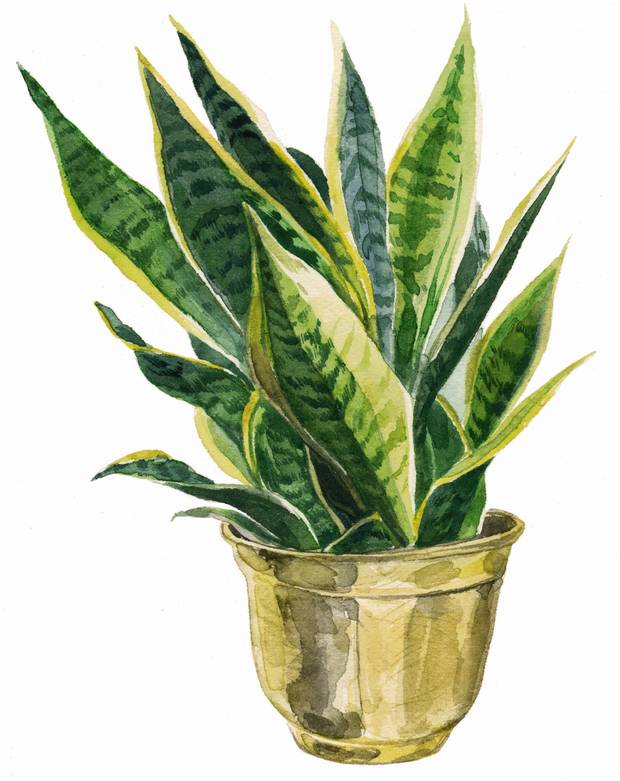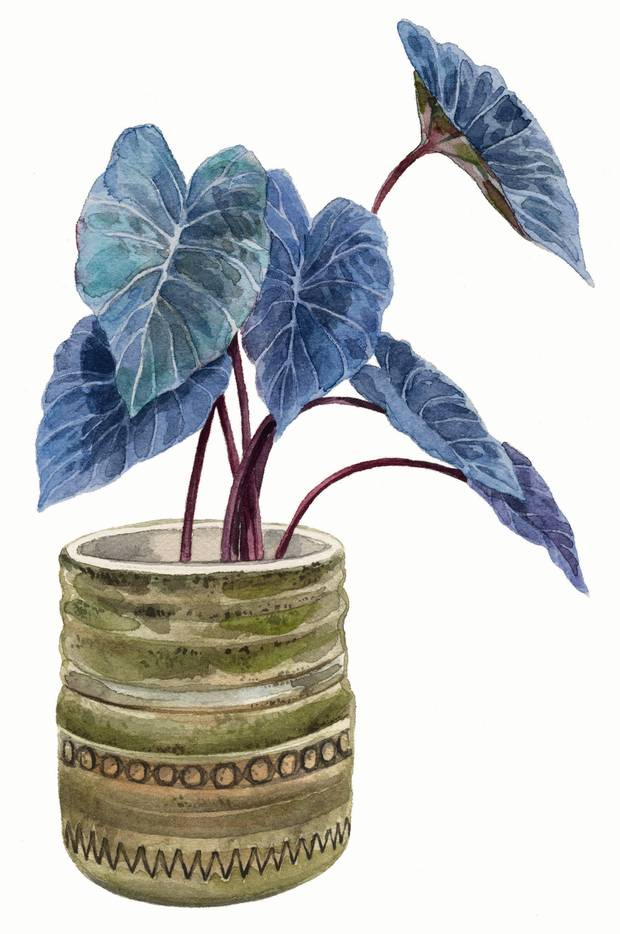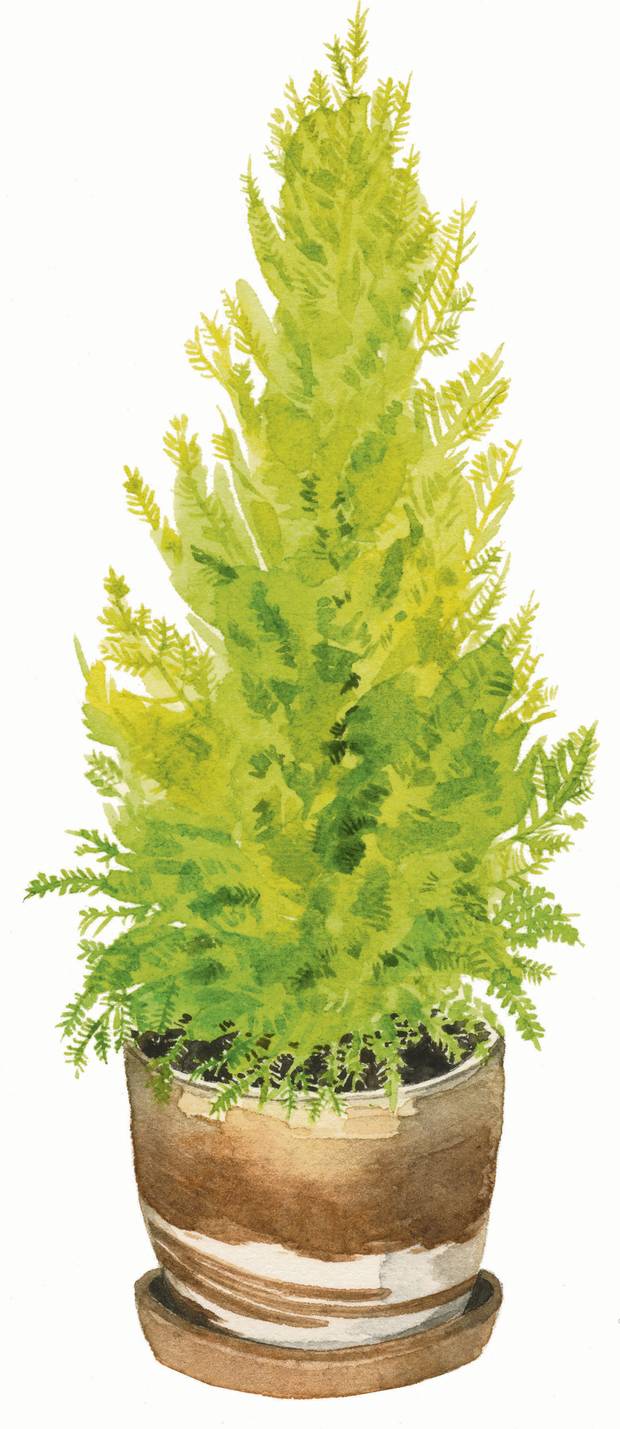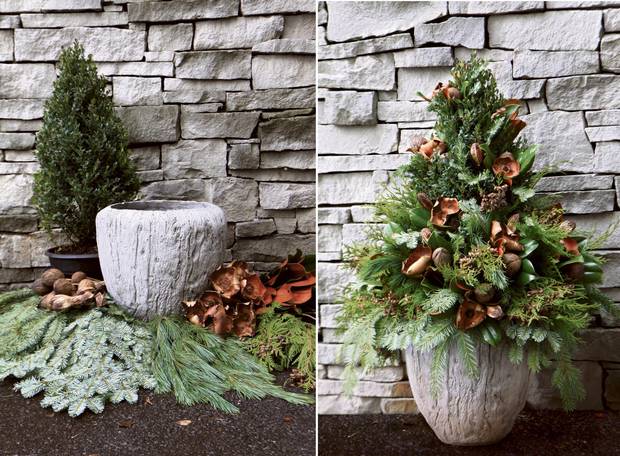The best indoor plants
Illustrations by Melinda Josie/for The Globe and Mail
Agave 'Shira Ito No Ohi'
All agaves make great indoor plants. They are a bit dangerous given the pointy tips and razor-sharp edges, but the glories of these plants outweigh any problems. They need lots of light and room temperature water; never let them dry out completely. They seldom need repotting and grow very slowly. If you do repot, use a cactus soil mix (it drains quickly) and never use one that retains water.

Sansevieria 'Futura Superba'
They clean the air, need minimal care and accept low light. This plant grows in a rosette around big bulbous roots and forms thick succulent elongated leaves to save on water (those hard leaves are storage tanks). It needs to be regularly divided because the bulbs will break most pots when they grow, though Zammit seldom repots his.

Colocasia spp.
You might have saved the corms of Elephant Ears in the garden – if not, look for them in a tropical plant store. Place a pot on a layer of pebbles to allow humidity to surround the plant but keep the roots from having contact with water. Make sure the soil is well drained, let the plant dry out between watering, and keep between 18 and 24 C. The giant leaves may not get as big as they do in the garden but will still make a dramatic statement.

Echeveria spp.
Succulents are not desert plants but they love bright light and cool temperatures (down to 5 C), which enhance the gloriously vibrant colours. The meaty rosettes will hold in moisture, so don't overwater or the roots will succumb to rot. And don't touch them, as it tends to mar the surface. Apart from that, collect them: There are hundreds of varieties with colours ranging from deep red to the palest of blues. They are serene and magnificent.

Golden cypress Cupressus macrocarpa 'Goldcrest'
It is terrific outside (as an annual) and even better inside, if only for the lemony scent. The intense chartreuse foliage mixes brilliantly with other plants, and the shape gives some heft to a small collection of plants set on a large saucer of pebbles. It's important to keep up the humidity and to make sure it gets at least six hours of light a day. Only water when the top five centimetres are dried out.
How to create an eye-catching arrangement

Paul Zammit
Ornamental kale is used in container decor on such a massive scale I want to scream, "No more!" But its season is over, and now the winter container shows its lovely head. Birch branches will be popping up all over the place. To get a fresh eye on things, we asked Zammit for suggestions.
1. Have a concept
In this case, he uses the idea of celebrating the garden's greens and browns. Consider the colour of your house (eg., match plants to the colour of the door), be careful of the stonework, and sensitive to where you'll place the container. "Build from scratch but don't be cheap," he cautions. "Buy enough material to have your design look great from every angle, especially from the house." He doesn't advise taking a lot of cuttings from the garden – leave them to feed the birds.
2. Drainage is key
Make sure the container has drainage holes. This is especially important since Zammit's main structural plant is a boxwood. "You can use cedar, yews, blue juniper, even a small live Christmas tree that you can continue to use in the garden," he says. Place a slightly smaller plastic pot inside the larger pot, and aim for at least 40 centimetres in diameter for the interior pot (three gallon size). Place the container on a brick or two to keep it off the ground.
3. Create a focus
After the live boxwood is in place, Zammit "skirts" the plant with different layers of contrasting colours and textures using the following: white pine, B.C. cedar, silver fir, Douglas fir and coned cedar branches. It's simple: Cut the base of each bough on a sharp angle and push it into the soil so it's secure enough to build up the design that way.
4. Add some bling
Accessorize with palm cups (they look like dried poppies on a stick and will last all winter), mahogany pods, Mintolla pods (truly weird round things) and cones of all difference shapes and sizes. Retrieve some seed heads from the garden leaving behind lots for the birds. Rather than getting mushy, southern magnolia leaves will dry in an arrangement. Next spring, just crush them and add to the compost.
5. Light it up
Never overload your container so that it looks stuffed rather than graceful. For the pièce de résistance, throw a few fairy lights over it for an added element to ward off the looming darkness of winter.
Note: Water every three or four days until the container freezes.
For a step-by-step demonstration go to torontobotanicalgarden.ca or shop at TBG's Annual Holiday Market, noon to 7 p.m. on Dec. 3.
Winter garden Q&A
'How do I hang lights without damaging my garden?'
Alas, just about any kind of lights actually attached to a tree will probably harm it. Wrapping lights around the trunk and branches is very dangerous for a tree. Bark can be stripped creating damage that has little chance of healing itself, especially if this is done repeatedly. It's also likely to harm any new buds that are forming.
Many people leave strings of lights on outdoor trees and then forget them. In a couple of years the plastic zip ties that help the lights cling to the tree start girdling the plant and cut off it's food supply. Serious damage follows.
It is much better to just throw strings of lights gently over the branches and run a safety cord along the ground to an outdoor plug. Or look for new lights that have battery-supplied power.
When you do permanent lighting in your garden, don't attach lights to the actual tree. Have a few on the ground or in the ground nearby major trees, lighting them from below.
Save a big branch from trees when they are pruned and ram a chunk into the ground. Mass your lights on and around it and you'll have winter magic and will cause no harm.
We always have what we call the Magic Tomato Cage: a tomato cage completely wrapped in small Christmas lights placed where we can easily see it. One inside and one outside, and it's possible to use up every light you own.
'It's mid-November and I haven't brought any plants in – what can I do?'
There are some wonderful plants that can be brought in from the garden. It's late in most parts of the country, so keep this in mind for the future. But you can still harvest some of the other attractive things in the garden. You might want to wait a few weeks to do the following: Cut a few branches from springflowering shrubs and put them in a vase filled with water (keep it fresh by replacing the water twice a week). This is called forcing, and eventually the buds on the shrubs will break dormancy and leaves will unfurl, buds will burst open and it's possible to have blooms in midwinter. Cut branches on an angle close to the base of the shrub and don't take more than a small percentage of the whole plant. Forsythia is the exception. You can whack it back by half without destroying it. Careful with the rest: Apple, cherry and willow are all good candidates for forcing.
Coloured twigs are another part of the garden's bounty: Have a look at your dogwood. You can snip out a few twigs without a problem. Just shove them into containers with soil in them, or fill a vase with them.
Sumac in a field or a large garden will have the most amazing seed heads on them. Take a few but don't strip plants: Birds need to eat.
Ivy – the scourge of most gardeners – can be whacked back and used for making table decorations, punched into a container arrangement (it will probably grow roots) or used for making wreaths. You don't have to be careful here. But if you do notice there are lots of berries on the plant, leave them for the birds.
'If I want to get a head start on planning my garden for spring, what should I be doing?'
Take photographs of the garden as it is stripped of leaves. See where there are holes and think about what should fill them. Evergreens provide an articulation to almost any garden if they are used throughout and not just as foundation plants. Used imaginatively, evergreens will draw your eye in; use them to enhance a focal point.
And is there a more wonderful contrast than in the types of bark and colours of twigs? Trees such as Acer griseum, Heptacodium miconioides and Stewartia spp. have exfoliating bark as they mature. It's thrilling to see the new young bark emerge and watch as birds swoop in for nesting material.
Don't overlook the variety of coloured bark in different species of dogwood. Cornus sericea 'Flavirama' and Cornus alba, with yellow and red twigs respectively, are both great candidates. Cut out old wood to about 20 centimetres every year to keep them refreshed.
When the garden is bare it's easier to see plants' underlying shapes. If you feel it's too late or too miserable to go out and prune shrubs and small trees, take photos and figure out how you'll give them new form in the spring.
Finally, promise yourself to divide plants in spring. Hostas are particularly important to get at really early on. They can be divided with the slash of a shovel just as their snubs show through the ground. Later on, the foliage makes it very difficult.